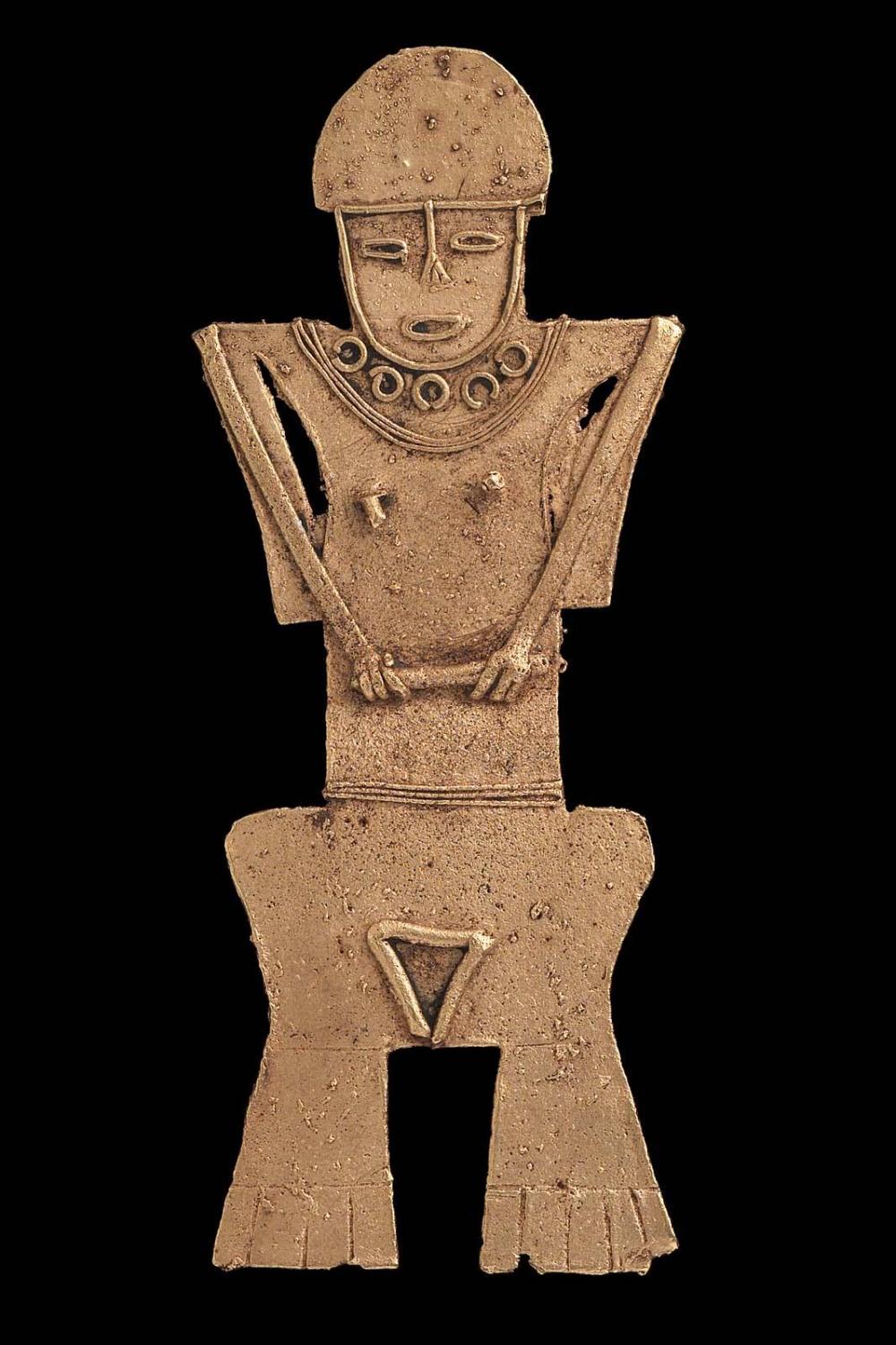Advanced Search 

Female effigy cache figure
Muisca
A.D. 1100–1550
Place of Origin: Departments of Cundinamarca & Boyacá, Colombia
Medium/Technique
Gold and copper alloy
Dimensions
9.52 cm (3 3/4 in.)
Credit Line
Museum purchase with funds donated by Landon T. Clay
Accession Number1975.67
CollectionsAmericas
ClassificationsRitual objects
DescriptionSeated (?) female figure holds a tubular staff-like object in both hands. Two wide ribbon-like forms hang from the back of each shoulder, and she wears a large skull cap with chin strap. Her body adornment includes a 3-strand necklace with five circular pendants and a thin belt of three strands.
ProvenanceBy 1908, collected in Colombia by Joaquin Arciniégas (b. 1865 - d. 1930), San José, Costa Rica and San Salvador, El Salvador; August 6, 1929, sold in San Salvador by Arciniégas to his brother-in-law, José Daniel Villatoro Rugama (b. 1887 - d. 1958), San Salvador; January 10, 1930, sold by Rugama to Oliverio Girondo (b. 1891 - d. 1967), Paris and Argentina. January 2, 1975, sold by Leon Buki (dealer), Buenos Aires, through Marcelo Buki, to Alphonse Jax (dealer), New York; 1975, sold by Alphonse Jax to the MFA. (Accession Date: March 12, 1975)
NOTE: The Arciniégas collection (MFA accession nos. 1975.35 - 1975.273) was offered to the Museum in 1975, accompanied by documentation of its ownership by Joaquin Arcienégas as early as 1908; photographs of it in the Arciniégas collection; and receipts for the collection’s sale in 1929 and 1930. Arciniégas had the collection in Costa Rica by 1908 and El Salvador by 1916; he asked his brother-in-law to sell the collection, and it was shipped to Paris for sale in December 1930/January 1931.
NOTE: The Arciniégas collection (MFA accession nos. 1975.35 - 1975.273) was offered to the Museum in 1975, accompanied by documentation of its ownership by Joaquin Arcienégas as early as 1908; photographs of it in the Arciniégas collection; and receipts for the collection’s sale in 1929 and 1930. Arciniégas had the collection in Costa Rica by 1908 and El Salvador by 1916; he asked his brother-in-law to sell the collection, and it was shipped to Paris for sale in December 1930/January 1931.
